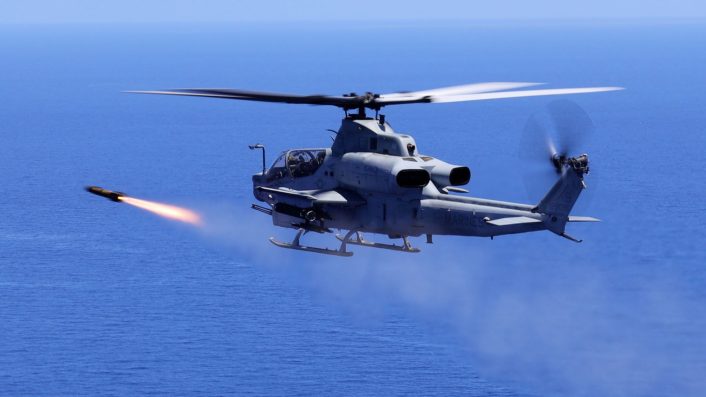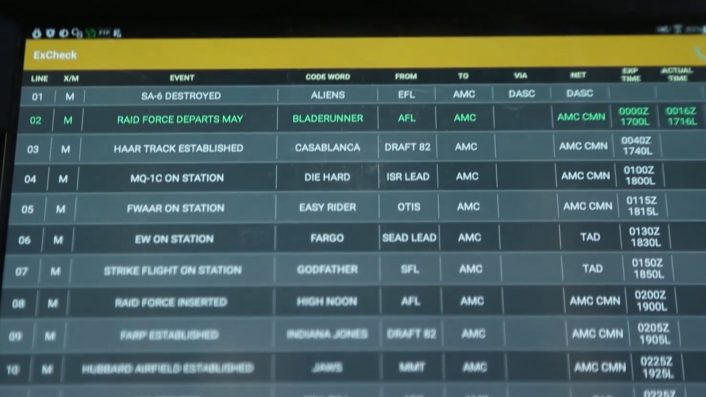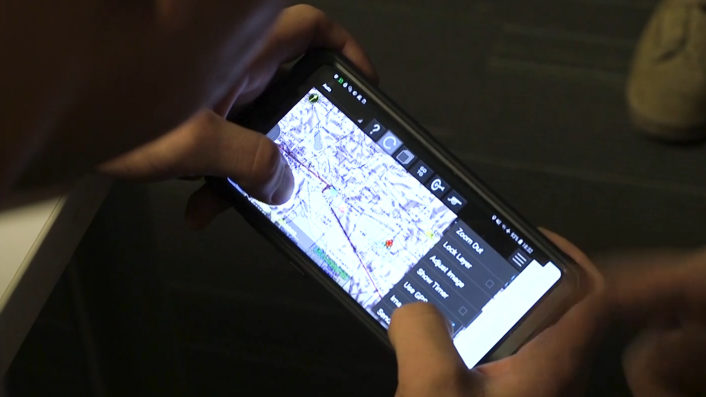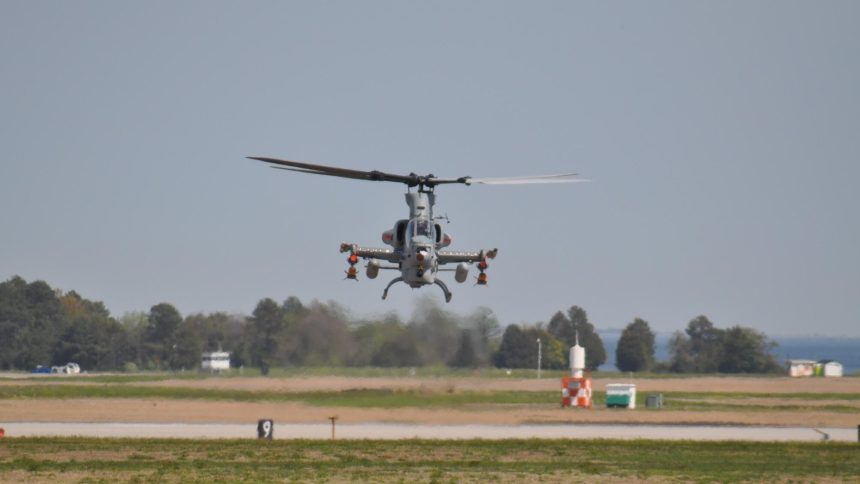The launch of the new LRPF weapon was conducted by way of a wireless application via a Marine Air-Ground Tablet (MAGTAB) in November 2024 at Yuma Proving Ground.
NAVAIR (Naval Air Systems Command) announced on Feb. 13, 2025 that it has tested a mysterious new Long Range Precision Fire (LRPF) missile from a U.S. Marine Corps AH-1Z Viper in Nov. 2024 at the Yuma Proving Ground, Arizona. In the only photo publicly released, two of the missiles can be seen hanging from the Viper’s stub wings.
One of the highlights of the test was that the launch of the single weapon was conducted “by way of a wireless application via a Marine Air-Ground Tablet (MAGTAB),” a system that has been around since 2019. This was the “first time a Marine Corps rotary-wing platform has employed a weapon system using a tablet-controlled device.”
An upgraded version was introduced in Dec. 2019 at Marine Corps Base Camp in Lejeune, North Carolina.
The orientation of the missile, official specifications about its capabilities and the place of the MAGTAB in its engagement with the target is not known. The fact that NAVAIR revealed the test after more than three months indicates the considerable degree of secrecy involved. “The November test at YPG exceeded the threshold requirements with regards to position, navigation, and timing,” NAVAIR mentioned to describe the test.
#ICYMI Long Range Precision Fires (LRPF) was successfully executed at Yuma Proving Grounds in Yuma, AZ, Nov 2024. The event was completed with an AH-1Z Viper launching a single weapon by way of a wireless application. #MakeAnImpact #MarineCorpsAviation https://t.co/jpvGJEDwjR pic.twitter.com/RBksnVLsup
— NAVAIR (@NAVAIRNews) February 14, 2025
Land, maritime strike in expeditionary roles and MAGTAB
The Corps’ has officially talked about efforts on reorienting the AH-1Z Viper attack helicopter for long-range standoff strikes in a maritime theater and incorporating the MAGTAB in its tactical battlefield planning and communication.
The Corps on Jun. 26, 2024, used an AH-1Z Viper in a first-of-its-kind live-fire exercise in the Philippine Sea, where it fired an AGM-179 JAGM (Joint Air-to-Ground Missile) at a moving sea target. Marines also called it the first JAGM being fired from an AH-1Z Viper in the Indo-Pacific region.
“Assessments of current and future capability gaps of the fleets needs identified this LRPF initiative as a cost-effective, long-range precision weapon for use against maritime and land-based targets,” said in the NAVAIR release Col. Scott Shadforth, the Director of Expeditionary Maritime Aviation – Advanced Development Team (XMA-ADT).

Similar to the JAGM, the LRPF missile could be a new rapidly developed/prototyped air-launched kinetic projectile for “cost-effective, long-range disparate effects in expeditionary and maritime environments.” The Corps has also been operationalizing standoff maritime strike capability for their island-hopping Marines in Marine Expeditionary Units, who would operate from friendly-controlled features in the SCS (South China Sea) and strike PLA Navy shipping.
The NMESIS (Navy Marine Corps Expeditionary Ship Interdiction System) that fires the NSM (Naval Strike Missile) is one such system, and the mystery LRPF could be another platform to complement that capability with an air-launched weapon. Naturally, the concern to preserve JAGM stocks, should Marines’ AH-1Z Vipers go ahead to undertake light disabling strikes to disable the primary sensors and radar masts of PLA Navy warships, by having an alternative system like the LRPF missile may have certainly influenced Navy and Marine Corps calculations.
MAGTAB
The USMC describes the MAGTAB as a “lightweight tablet-based system that improves situational awareness on the battlefield,” enabling “dismounted Marines to leverage smart devices to plot and share locations.”
The moving map with friendly and enemy locations allows a better overall view of the battlespace “at the tactical edge […] decreasing the chance for friendly fire,” said Maj. R. Travis Beeson, tactical applications and service team lead for the Marine Corps Systems Command (MCSC), in the Apr. 2020 release that announced the introduction of a more advanced MAGTAB version.

The press release focused on the MAGTAB’s primary use of relaying messages, texts and video data in addition to existing radio systems, for “quieter and efficient long-distance communication,” allowing to reduce “location errors due to misreading a paper map.”
The role and functions of the system can also be seen in the footage of a short segment about the MAGTAB that the USMC released on Nov. 27, 2019. In that occasion, Marines with Marine Aviation Weapons and Tactics Squadron One (MAWTS-1) utilized the MAGTAB during a Weapons and Tactics Instructor (WTI) course at Marine Corps Air Station Yuma, Arizona.
As it can be seen in the screengrabs, the tablet showed the mission status of various tactical actions and asset movements, including the destruction of a SAM (Surface-to-Air Missile) battery labelled as “SA-6 destroyed,” an MQ-1C drone “on station,” and a FARP (Forward Arming and Refueling Point) being “established”.
MAGTABs also show the positions of various assets on a common map, with logos representing MV-22B Ospreys and chats between various units, their positions and mission updates visible in the video. As the narration in the video explained, MAGTABs enhance and simplify mission planning and execution.

Role in fire control
The MAGTAB also contributes to fire direction, fire control and weapons engagement in the kill-chain thanks to its role in complementing communication with the Field Artillery Tactical Data System, the Command and Control Personal Computer and the Army’s Joint Battle Command Platform. The new MAGTAB variant enables this capability with “lower data bandwidth requirements,” using a lower percentage of the available network compared to the MAGTAB’s previous version.

In the latest test, it is not yet known if the MAGTAB was carried by ground units or the WSO (Weapons Systems Operator) in the tandem-seat AH-1Z Viper. It is also unclear if the command to fire the missile was given by Marines on the ground.
However, based on the description of the MAGTAB and its role so far, it appears that the hand-held device may have been used to mark a location requiring fire support or a target that needs destruction, with the AH-1Z Viper simply launching the missile in that direction.
The greatest weapon is the fighting spirit at the heart of each Marine and technology is one step closer to making them even more lethal.
Read how the MAGTF Common Handheld program helps Marines in tactical environments make more informed decisions: https://t.co/GpOoejvxEa pic.twitter.com/rHfpHQ0O24
— USMC Recruiting (@USMarineCorps) April 7, 2018
LRPF missile
The new LRPF missile has all the attributes of an air-launched surface and maritime strike capable cruise missile of sorts, with x-shaped wings and what appears to be a ventral air intake, suggesting an air-breathing engine. The only image of the helicopter and the missile captured from the front-aspect shows part of the weapon and its adapter launcher under the outboard hardpoint.
Two such missiles are carried by the helicopter, one on each of the hardpoints. NAVAIR has also not yet specified the nature of the target that was hit. However, the capability is part of a long line of endeavours undertaken by the U.S. military to bridge gaps in logistical and operational capabilities in a high-end war in the western Pacific before China.









